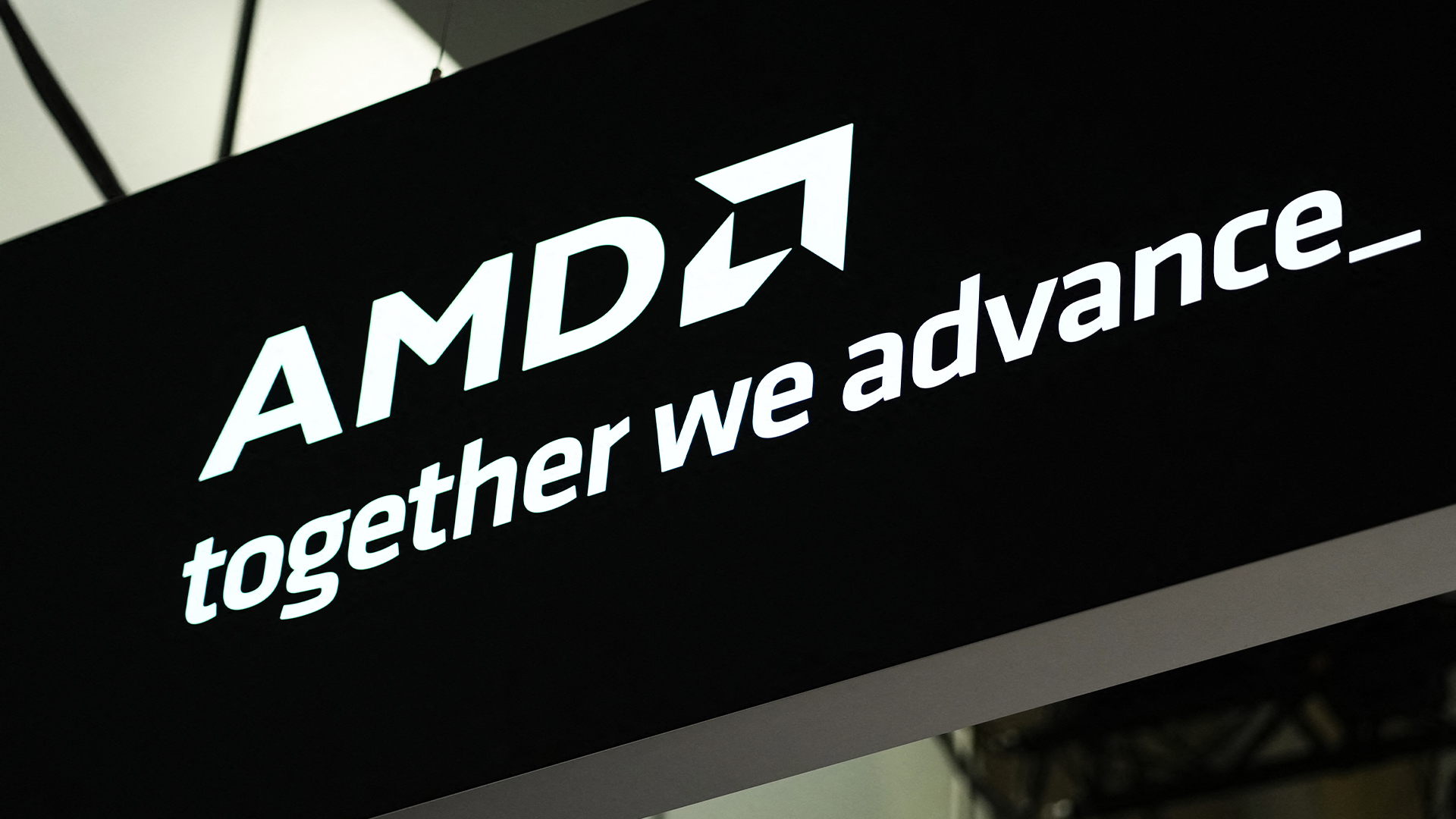Presented by AMD
The power of the cloud for virtualization
AMD’s MxGPUs underpin a range of virtualization services that enable developers, architects, and engineers to improve cloud observability and allocate resources based on their unique circumstances

The rise of public cloud over the last decade has unlocked marked efficiency and performance benefits for businesses globally, enabling enterprises to streamline operations and maximize the use of vital business resources.
While the benefits of public cloud computing have typically centered around its ability to be harnessed as a breeding ground for software development and data storage to improve business performance, another aspect that is often overlooked is virtualization.
Virtualization, whether on premises or in the cloud, allows businesses to split hardware resources between multiple users.
This in turn enables them to allocate these resources more appropriately. As a bonus, it can potentially help with cutting costs, which have been growing in recent years and placing significant pressure on budgets.
Developers at enterprises globally have been harnessing virtualization through a raft of key cloud services. These include Microsoft Azure NVv4, or AWS EC2 G4ad, both of which are underpinned by AMD’s virtualization-optimized MxGPUs.
Maximizing the use of these tools can be a significant hurdle for organizations of all sizes and at all stages of their cloud journey, however.
What you need to know about Microsoft Azure NVv4
First introduced in 2019, Microsoft’s AMD-powered NVv4 instances are aimed at providing highly secure and cost-efficient GPU partitioning for Azure customers.
This is catered to a wide variety of roles; from task workers, to developers, designers, and architects. People in these jobs use applications that rely on GPU acceleration to provide near instant, responsive user experiences for customers, as well as to power the productivity apps they use on a daily basis.
RELATED WHITEPAPER
Traditional CPU-based virtual machines can struggle to handle graphics-heavy applications, which can present sizable challenges with regard to efficiency and speed. Ultimately, this can cause frustration and prompt a dip in productivity due to the inability to work at pace.
Similarly, the use of GPU-accelerated on-premises virtual environments has often been an expensive investment for organizations, resulting in a balancing act between maintaining cost efficiency and rapid development requirements.
Through NVv4, however, Microsoft Azure is providing enterprises with both affordable and powerful cloud-powered desktop experiences. Underpinned by AMD, NVv4 instances offer four configurable options that allow users to allocate GPU capabilities for their chosen workloads.
These options range from 2GB up to 16GB, creating scalable, affordable virtual desktop capabilities by matching GPU resources to specific workloads based on their varied needs.
What you need to know about AWS EC2 G4ad
Amazon’s EC2 G4ad instances offer similar benefits to developers, engineers, and designers by providing remote virtual workstation capabilities.
EC2 G4ad instances are designed specifically to provide enterprise-grade workstation class experiences, complete with AMD Zen and RDNA architecture and high-performance memory capabilities.
This can be used across a range of operating systems, including Ubuntu, Microsoft Windows Server, CentOS, and Amazon Linux.
According to Amazon, EC2 G4ad instances can deliver up to 40% better price performance compared to similar GPU-based instances, with heightened performance for graphics intensive applications including virtual workstations.
G4ad instances are designed for use spanning a variety of industries, and are already in use by organizations operating in the manufacturing, oil and gas, education, and media and entertainment sectors.
Five size tiers are offered through Amazon EC2 G4ad, ranging from the G4ad.xlarge option with one GPU, four vCPUs and 16GB of memory through to the G4ad.16xlarge range that provides four GPUs, 64 vCPUs, and up to 256GB of memory.
The new ‘large’ instances, rolled out in 2021, have enabled customers to deliver around 25% lower costs, according to Amazon.
Supercharging visualization with AMD MxGPUs
At the heart of both AWS and Azure instance services lies AMD MxGPUs, which include AMD’s RDNA 2 GPUs to provide marked performance and efficiency benefits spanning a range of areas.
This includes cloud gaming, desktop as a service, workstation as a service, machine training, and visual compute workloads.
In using fractional GPUs, AMD says organizations can draw on significant capabilities to power modern remote office collaboration, and supercharge productivity. Similarly, this also enables developers to accelerate the use of pro design and visualization applications in workstation as a service scenarios.
MxGPUs help accelerate graphics and compute requirements through “predictable performance and support”, according to the company, with its virtualization technology representing the world’s “first hardware-based virtualized GPU solution”.
This is underpinned by industry standard Single-Root I/O Virtualization (SR-IOV) technology, enabling customers to use multiple virtualized servers per each individual GPU.
In addition to greater manageability and efficiency improvements, security is also a key advantage of AMD MxGPUs. Cloud-based virtual desktops are typically exposed to the same degree of risk as conventional ones, while the volume of targeted attacks against remote workers in recent years has skyrocketed.
However, unlike software-based virtualization offerings, AMD’s hardware-based virtual desktop technology draws upon a share of local memory to enhance security.
“The cornerstone of AMD’s Multiuser GPU technology is its ability to preserve the data integrity of virtualized desktops and their application data,” according to a whitepaper on AMD GPU virtualization technology. “The hardware-enforced memory isolation logic provides strong data security among the VFs, which helps prevent one VM from being able to access another VM’s data.”
“With security being a bare minimum requirement for any virtualization solution, AMD’s hardware-based virtualized GPU solution offers a strong deterrent to unauthorized users who traverse the software or application layers seeking means to extract or corrupt GPU user data from the virtual machines. Although a VF can access full GPU capabilities at its own GPU partition, it does not have access to the dedicated local memory of its sibling VFs.”
Sign up today and you will receive a free copy of our Future Focus 2025 report - the leading guidance on AI, cybersecurity and other IT challenges as per 700+ senior executives
ITPro is a global business technology website providing the latest news, analysis, and business insight for IT decision-makers. Whether it's cyber security, cloud computing, IT infrastructure, or business strategy, we aim to equip leaders with the data they need to make informed IT investments.
For regular updates delivered to your inbox and social feeds, be sure to sign up to our daily newsletter and follow on us LinkedIn and Twitter.
-
 Trump's AI executive order could leave US in a 'regulatory vacuum'
Trump's AI executive order could leave US in a 'regulatory vacuum'News Citing a "patchwork of 50 different regulatory regimes" and "ideological bias", President Trump wants rules to be set at a federal level
-
 TPUs: Google's home advantage
TPUs: Google's home advantageITPro Podcast How does TPU v7 stack up against Nvidia's latest chips – and can Google scale AI using only its own supply?
-
 GPU cloud startup Vultr secures AMD backing in $333 million investment round
GPU cloud startup Vultr secures AMD backing in $333 million investment roundNews The firm plans to use the cash to expand AI infrastructure and cloud computing globally
-
 On-premises, in cloud or hybrid — the risk of status quo
On-premises, in cloud or hybrid — the risk of status quowhitepaper Combine the power of public and private cloud


